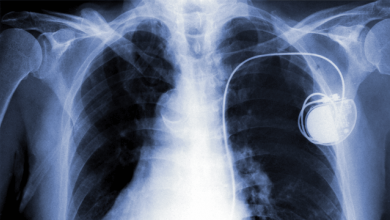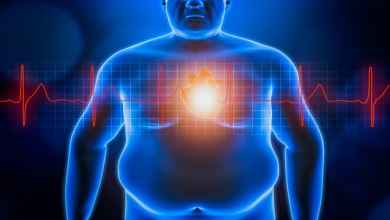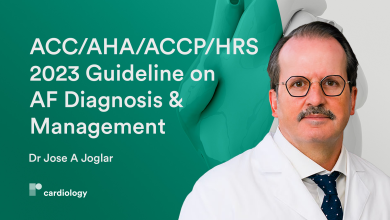Search results
Author(s):
Krystien VV Lieve
,
Arthur A Wilde
,
Christian van der Werf
Added:
3 years ago
Catecholaminergic polymorphic ventricular tachycardia (CPVT) is a rare but severe genetic cardiac arrhythmia disorder. Clinically, CPVT most often presents in childhood with symptoms such as syncope or sudden cardiac death due to polymorphic ventricular tachycardia (VT) or ventricular fibrillation typically triggered by exercise or emotions in the absence of structural heart disease.1
Mutations…
View more
Author(s):
Agnieszka Kotalczyk
,
Gregory YH Lip
,
Hugh Calkins
Added:
2 years ago
Author(s):
Rohil Bedi
,
Ali Ahmad
,
Piotr Horbal
,
et al
Added:
7 months ago
Management of Cardiovascular Implantable Electronic Devices Infections in High-Risk Patients
Author(s):
Charles Kennergren
Added:
3 years ago
Article
Author(s):
Haran Burri
Added:
3 years ago
Remote follow-up and monitoring of patients implanted with cardiac implantable electronic devices (CIEDs) has been introduced over a decade ago, and is now indicated according to European (class IIa indication1) and American (class I indication2) guidelines. There have been high expectations that this technology will improve patient outcome, as it significantly shortens response to actionable…
View more
Unmasking Adenosine
Author(s):
Gareth DK Matthews
,
Andrew Grace
Added:
3 years ago
Article
Author(s):
Jose A Joglar
Added:
2 months ago
Dr Jose Joglar (UT Southwestern, US) joins us virtually to discuss the 2023 guidelines for atrial fibrillation (AF) diagnosis and management.These guidelines are an update to the 2014 document covering the full spectrum of managing patients with AF, from prevention to lifetime interventions, to rhythm and rate control, as well as special populations. A new classification of AF has been created,…
View more
Author(s):
Henry Chubb
,
John Whitaker
,
Steven E Williams
,
et al
Added:
3 years ago
Atrial Septal Defects and Patent Foramen Ovale
Nomenclature
The atrial septum is a complex structure, with the true septum comprised of two layers containing a potential flap valve. The septum primum extends from caudal to cranial within the atria, on the left side of the septum secundum. The septum secundum is a crescent-shaped infolding of the atrial roof, extending from the anterosuperior…
View more
Convergent AF Ablation
Author(s):
Karan Wats
,
Andy Kiser
,
Kevin Makati
,
et al
Added:
3 years ago
Article
Author(s):
Nikolaos Fragakis
,
Gabriele Vicedomini
,
Carlo Pappone
Added:
3 years ago
Although atrial fibrillation (AF) is considered the most common arrhythmia in clinical practice, its prevalence is relatively low in the young and middle-aged, ranging from 0.5 % in men below 40 years to 1 % by 60 years.1,2 Regular exercise is proposed as a powerful tool for the primary and secondary prevention of cardiovascular disease, reducing most of the risk factors that predispose to AF,…
View more
















 « First
« First